The R Chart Tracks the Mean of a Variable Data, and the Xbar Chart Its Standard Deviation.
What are X Bar R Control Charts?
X Bar R charts are the widely used control chart for variable data to examine the process stability in many industries (like Hospital patients' blood pressure over time, customer call handle time, length of the part in production process etc.,).
Selection of appropriate control chart is very important in control charts mapping, otherwise ended up with inaccurate control limits for the data.
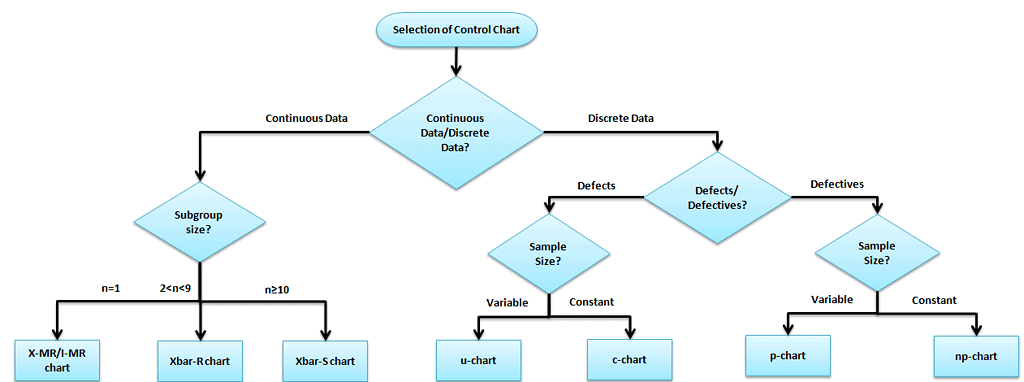
X bar R chart is used to monitor the process performance of a continuous data and the data to be collected in subgroups at a set time periods. It is actually a two plots to monitor the process mean and the process variation over the time and is an example of statistical process control. These combination charts helps to understand the stability of processes and also detects the presence of special cause variation.
The cumulative sum (CUSUM) and the exponentially weighted moving average (EWMA) charts are also monitors the mean of the process, but the basic difference is unlike X bar chart they consider the previous value means at each point.
X Bar R Control Chart Definitions
X-bar chart: The mean or average change in process over time from subgroup values. The control limits on the X-Bar brings the sample's mean and center into consideration.
R-chart: The range of the process over the time from subgroups values. This monitors the spread of the process over the time.
Use X Bar R Control Charts When:
- Even very stable process may have some minor variations, which will cause the process instability. X bar R chart will help to identify the process variation over the time
- When the data is assumed to be normally distributed.
- X bar R chart is for subgroup size more than one (for I-MR chart the subgroup size is one only) and generally it is used when rationally collect measurements in subgroup size is between two and 10 observations.
- The X Bar S Control chart are to be consider when the subgroup size is more than 10.
- When the collected data is in continuous (ie Length, Weight) etc. and captures in time order
How to Interpret the X Bar R Control Charts
- To correctly interpret X bar R chart, always examine the R chart first.
- The X bar chart control limits are derived from the R bar (average range) values, if the values are out of control in R chart that means the X bar chart control limits are not accurate.
- If the points are out of control in R chart, then stop the process. Identify the special cause and address the issue. Remove those subgroups from the calculations.
- Once the R bar chart is in control, then review X bar chart and interpret the points against the control limits.
- All the points to be interpret against the control limits but not specification limits. As specification limits are provided by customer or management whereas control limits are derived from the average and range values of the subgroups.
- If any point out of control in X bar chat. Identify the special cause and address the issue.
- Process capability studies can be performed only after both X bar and R chart values are within the control limits. There is no meaning to perform process capability studies of an unstable process.
Steps to follow for X bar R chart
Objective of the chart and subgroup size
- Determine the objective of the chart and choose the important variables
- Choose the appropriate subgroup size and the sampling frequency
- Collect minimum 20 to 25 sets of samples in the time sequence
Example: In a manufacturing industry the plate thickness is one of the important CTQ factor, during Measure phase, project team performed the process capability study and identified that the process is not capable(less than 2 sigma). In Analyze phase collected 20 sets of plate thickness samples with a subgroup size of 4.
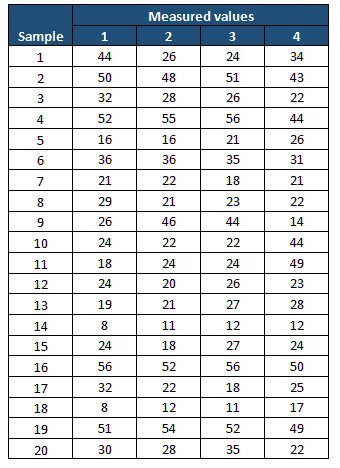
Compute X bar and R values
- Measure the average of each subgroup i.e X bar, then compute grand average of all X bar value, this will be center line for X bar chart
- Compute the range of each subgroup i.e Range, then measure grand averages of all range values ie R bar and this will be the center line for R chart
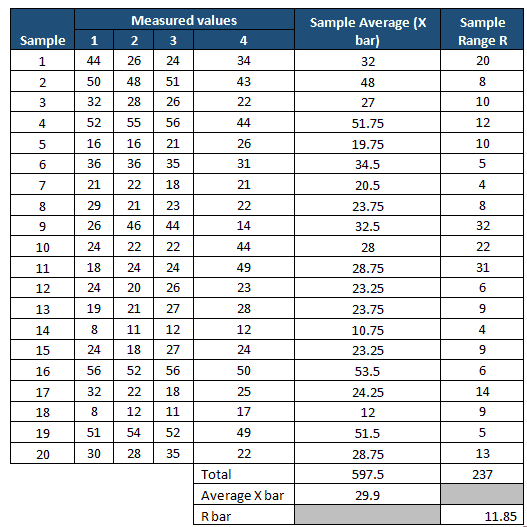
Determine the Control Limits
- The first set of subgroups are to determine the process mean and standard deviation, these values are to be consider for creation of control limits for both range and mean of each subgroup

- The process to be in control in the early phase of the production. Special causes to be identified if any of the points are out of control during initial phase and also the subgroup has to be removed for calculation.
- Sometimes in the initial phase it would be also good to have few points out of control on the x-bar portion. Otherwise, if all the values are within the control limits may be because of slop in the measurement system, team won't focus on it. Identify appropriate Measurement System Evaluation (MSE).

- Where
- X is the individual value (data)
- n is the sample size
- X bar is the average of reading in a sample
- R is the Range, in other words the difference between largest and smallest value in each sample
- R bar is the average of all the ranges.
- UCL is Upper control limit
- LCL is Lower control limit
The below control chart constants are approximate values to measure the control limits for X bar R chart and other control charts based on subgroup size

Refer common factors for various control charts
Example cont: In the above example n=4


Interpret X bar and R chart
- Plot both X bar and R chart and identify the assignable causes
Example Cont: Use the above values and plot the X bar and Range chart

From the both X bar and R charts it is clearly evident that most of the values are out of control, hence the process is not stable
Monitor the process after improvement
- Once the process stabilizes and control limits are in place, monitor the process performance over the time.
Example cont: Control Phase- Once the process is improved and matured, team identified the X bar R chart is one the control method in Control plan to monitor the process performance over the time period
Following are the measurement values in Control phase of the project
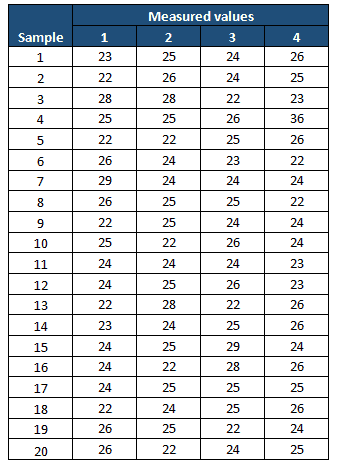
Compute X bar and Range
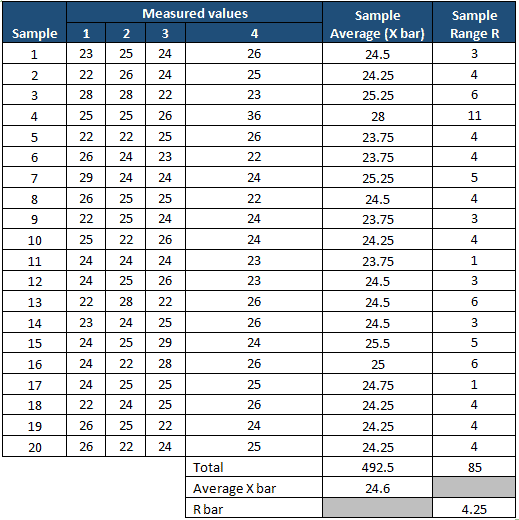


From the both X bar and R charts it is clearly evident that the process is almost stable. During initial phase one value is out of control, team has to perform the root cause analysis for the special cause and also the process is smoothing out from the data set number 16. If that continued, the chart would need new control limits from that point.
- After the process stabilized, still if any point going out of control limits, it indicates an assignable cause exists in the process that needs to be addressed. This is an ongoing process to monitor the process performance.
Important notes
- A process is "in control" that indicates means of the process is stable and it can be predictable
- A process is in stable that does not mean it's a zero defect process.
- Remember to NEVER put specifications on any kind of control chart.
- The points on the chart are comprised of averages, not individuals. Specification limits are based on individuals, not averages.
- The operator might have the tendency to not react to a point out control when the point is within the specification limits.
- X bar R chart helps to avoid unnecessary adjustments in the process
X Bar R Control Chart Videos
The R Chart Tracks the Mean of a Variable Data, and the Xbar Chart Its Standard Deviation.
Source: https://sixsigmastudyguide.com/x-bar-r-control-charts/
0 Response to "The R Chart Tracks the Mean of a Variable Data, and the Xbar Chart Its Standard Deviation."
Post a Comment